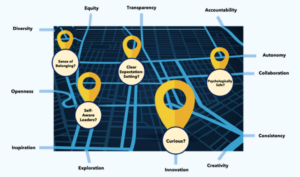
Employee Assistance Programs: 8 Success Stories and Lessons
In the wake of the pandemic, HR managers and business leaders have been pivotal in reshaping Employee Assistance Programs (EAPs) to better cater to their

In the wake of the pandemic, HR managers and business leaders have been pivotal in reshaping Employee Assistance Programs (EAPs) to better cater to their

Recently, I coached a professional juggling multiple responsibilities: pursuing a PhD, working full-time, being a dedicated sports parent, and seeking their next career opportunity. They

Sponsored by Firstup. We’ve all encountered employee onboarding nightmares. Perhaps your manager forgot your start date. Or maybe the tools and technology assigned to you didn’t

What an exhilarating experience! I just wrapped up a panel discussion at the Achievers Recognition Next 2024 one-day deep-dive forum in Toronto. Immersive events can

In a world where great talent is hard to find, emphasizing employee self-care and work-life balance gives employers a serious competitive advantage. Fostering a culture

Imagine an organization that consistently delivers exceptional results, maintains high employee retention, and fosters a culture of growth and passion. This may seem beyond reach

Employee recognition is a must for any organization. But if you’re looking for a one-and-done kind of formula, you’ll probably want to think again. That’s

Sponsored by Firstup For years, Gallup has tracked global employee engagement. Although the trend line has improved somewhat over the past decade, still only 23% of

As artificial intelligence continues to spread across the business landscape, it is transforming work in countless ways. For example, thanks to AI, we’re entering a

Think about the most successful companies you know. More likely than not, they’re built on the strength of frontline employees, working collaboratively toward shared goals

As organizations move beyond the pandemic, workforce development is changing in fundamental ways. For example, wellbeing has emerged as a top workforce priority, and this

Sponsored by The Culture Platform “Get some perspective.” That’s the best advice I ever received as a manager. And I took it to heart, because during

Does your organization observe Employee Appreciation Day? Once a year on the first Friday in March, many employers take time to celebrate the commitment and

As 2024 begins, employers are eager to move beyond “The Great Resignation” of 2022 and last year’s subsequent “Great Gloom.” But what exactly are organizations

Sponsored by Workleap Officevibe In most organizations, the human resources team is a primary point of contact throughout the employee journey. From the very first

We’re facing turbulent times in the world of work. And not surprisingly, the language we use to describe modern work life is changing just as

Productivity metrics were essential 100 years ago, during the manufacturing age. At that time, organizations measured success with metrics like hours worked, revenue per employee,

Diving into important talent strategy trends for 2024, one theme surfaces again and again. What many call “The Great Work Reset” isn’t over. Far from

If you subscribe to our twice-monthly TalentCulture newsletter, or you follow us on social media, you probably know we often publish original articles by business

Driven by an ever-growing desire for personalized, convenient, seamlessly integrated experiences, customer expectations continue to evolve at breakneck speed. To meet these expectations, organizations must

People often assume happy employees are also engaged. But is that really a safe bet? Sometimes with the best intentions to improve happiness in the

When it comes to careers, many of us no longer depend on a single source of income. In fact, people are turning to side hustles

Sponsored by The Culture Platform What makes maps so special is they tell you exactly where to find places you want to visit. Wouldn’t it

The Problem With Grind Culture In recent years, “hustle” and “grind” culture have become equated with drive, ambition, and success. The logic is that if

In the wake of the Covid pandemic, employee benefits have experienced a significant transformation. Increasingly, employers are focusing on benefits that enhance individual wellbeing and